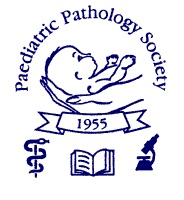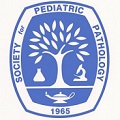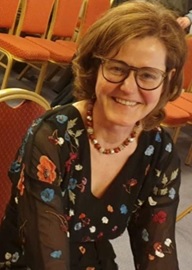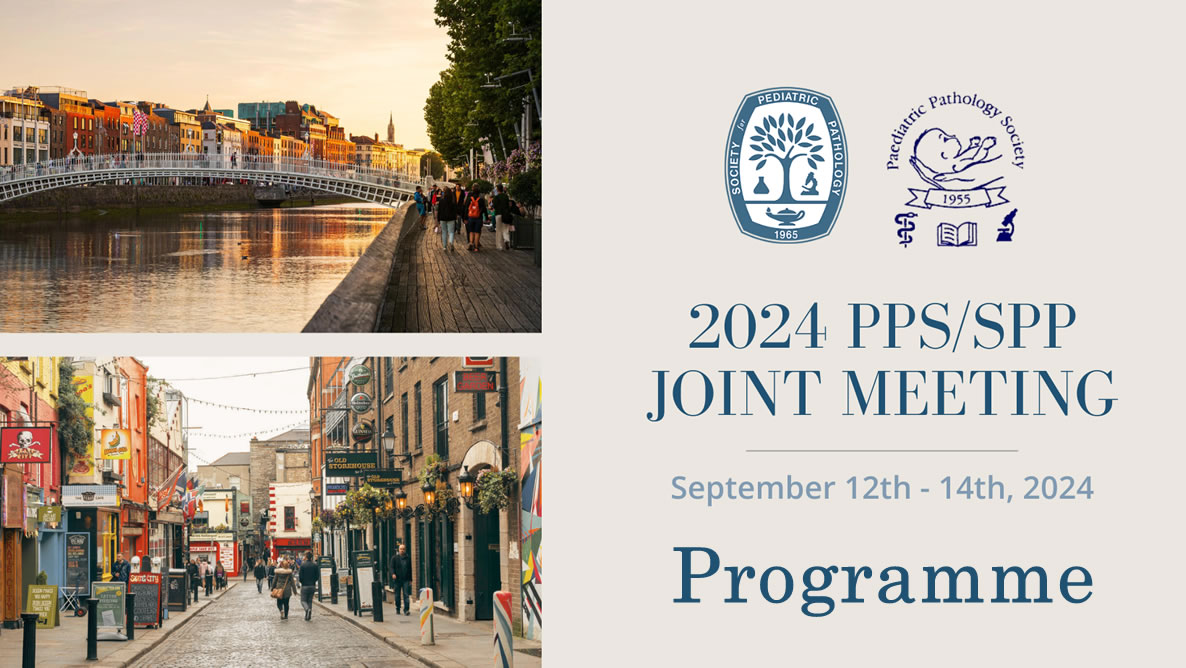

 CÉAD MÍLE FÁILTE ROMHAIBH GO LÉIR GO BAILE ÁTHA CLIATH AGUS GO H-ÉIRINN DO CHOMHCHOMHAIRLE SPP-PPS 2024!
CÉAD MÍLE FÁILTE ROMHAIBH GO LÉIR GO BAILE ÁTHA CLIATH AGUS GO H-ÉIRINN DO CHOMHCHOMHAIRLE SPP-PPS 2024!
 Local organiser: Maureen O'Sullivan
Local organiser: Maureen O'Sullivan
We hope that you will bring some extra time with you to explore this beautiful island, or return soon to take in the sights and sounds at your leisure and immerse yourself in some Irish culture. Here are some basic facts to give you a little socio-cultural background:
The island of Ireland was probably first settled ~10,000 years ago. Celts arrived from central Europe around 600B.C. There followed invasions by Vikings (8-9th century), then Normans (12th century) and then centuries of colonisation and rule by the English. In 1916, an armed rebellion, the Easter Rising started the process whereby Ireland gained its independence from its neighbour. This painful journey included the War of Independence (1919-1921) eventually leading to the Anglo-Irish treaty in 1922, a treaty that divided the island and brought the "Irish Free State" into existence. The Free State, now the Republic of Ireland (Éire) constituted 26 of the island’s 32 counties, while the 6 counties in the North-Eastern part of the island became Northern Ireland and remained part of the United Kingdom. The decision to divide the island was controversial at the time and triggered an Irish Civil War in 1922. It also contributed to the often fractious history of the North of Ireland throughout the 20th century. Happily this year we celebrate the 25th anniversary of an historic agreement, The Good Friday Agreement, that brought peace and a promise of progress for all on the island. Regrettably, Brexit has imposed new challenges on this process, taking Britain out of the European Union, when our shared membership had done much to facilitate progress.
The famine of the 1840’s saw the Irish population fall dramatically from a peak of 8.5 million with over 1 million deaths and a similar number leaving the country. Emigration continued to be a feature of Irish life for much of next 150 years with hunger and economic disadvantage forcing family members to leave for foreign shores of myriad countries worldwide, most notably the UK, USA and Australia. Indeed, there are now more people of Irish descent living elsewhere than reside at home here in Ireland. Each year, on St Patrick’s Day, major monuments across the world turn green in recognition of this Irish diaspora and the contribution they make to the many different communities who welcomed them. Perhaps some of you are the descendants of Irish émigrés and plan to seek out your Irish roots while you are here!
Happily, the emigration narrative has been turned about. Ireland has become a modern European country with a thriving economy and a young, energetic and highly educated workforce. Indeed, the country has itself become a destination for immigrants from all over the world. Our population, estimated in 2023 at about 5.2 million, is now far more diverse and multi-cultural than ever to fore. In contrast to days gone by, you will hear many languages spoken on the streets of our cities these days!
While Ireland looks to the future with confidence, it also takes great pride in its history, culture and traditions. English is the language spoken by the vast majority of Irish people, but the official first language of the Republic of Ireland is actually Irish (Gaeilge). Gaeilge, a Celtic language, is spoken as a first language in a very small minority of communities, mostly along the West coast in Co. Cork, Kerry, Galway and Donegal as well as in Rinn, Co. Waterford. However, Gaeilge is a core subject in all primary schools in Ireland and there has been a resurgence of education through the medium of the Irish language with 'Gaelscoileanna' proliferating nationwide. There are national TV and Radio channels dedicated to news and programmes 'as Gaeilge' (through Irish).
Irish people love sports. Irish men and women have excelled at rugby, golf, soccer, rowing, sailing, boxing and athletics. The country has an international reputation for horse breeding and racing and a day at the races is a treat many visitors to Ireland enjoy.
The country also has its own uniquely Irish sports. These Gaelic games, principally Gaelic football, hurling and camogie thrive throughout the country and local Gaelic Athletic Association (GAA) clubs, where these sports are played, form the life-blood of rural communities.
Irish music and dance is a significant part of our culture. Alongside Gaelic games, these have been exported very successfully with our emigrants and are key components of their identity for many Irish overseas. Irish dance and music especially have been showcased in a commercial way literally on the international stage with “Riverdance” and other spin-off shows. You will be treated to an array of Irish traditional music and dance while visiting Dublin and we hope that you will join in!
For the best 'seisiún' (spontaneous traditional music-making and song) however you might find a rural pub in the west on a summer’s evening and there the 'craic' will be mightiest! Something to particularly look out for is the 'sean nós' style of music and dance – this is the
'old tradition' and especially entertaining in dance form! …and then there’s the soft shoe versus hard-shoed step dancing….
Irish musicians of course also include a few artists in other genres you may have come across, such as U2, the Cranberries, the Dubliners (Luke Kelly), Van Morrison, Sinéad O’Connor, Hozier, Rory Gallagher and Enya to name but a few.
Ireland has produced many literary giants including our 4 Nobel prize winners for literature: W.B. Yeats, George Bernard Shaw, Samuel Beckett and Séamus Heaney (visit the HomePlace) , as well as James Joyce (Come celebrate Bloomsday!), Oscar Wilde, Bram Stoker, Jonathan Swift, John McGahern, Brian Friel, Colm Tóibín and many more….
If you have the chance, don’t miss a great night at the theatre -either in the iconic Abbey theatre or the Gate in the heart of Dublin city!
A surprisingly rich literature in the Gaelic language also emerged in the 20th century from the tiny island community of the Blasket Islands off the Southwest coast in Co. Kerry.
And just a brief note about the weather – the only reliable observation is that Irish weather, while generally clement, is utterly unpredictable! Remember: there’s no such thing as bad weather only unsuitable clothing…
BRIEF VISIT (In and around Dublin):
Here are some ideas for what you might wish to get up to during your stay in Dublin, if it’s a brief one.
Dublin - Extend Your Stay For 24 Hours!
Dublin - Extend Your Stay For 48 Hours!
Before you arrive you can check what events are on in Dublin during your stay here: www.visitdublin.com
LONGER VISIT:
If /when you come back with a bit more time to spend, exploring the entire west coast which displays a diverse beauty unique to each county as you travel north to south or vice versa is highly recommended. The Wild Atlantic Way is a coastal route of over 1600 miles through some of the most beautiful scenery anywhere. Visit the old Viking settlements that became our cities of Cork, Waterford, Limerick and the gorgeous Kilkenny, which hosts a superb classical arts festival annually in August. Head to Wexford for the International Opera Festival held annually in October/November.
For a special treat, you might choose to stay in a country house or castle! Check out the Blue Book www.irelands-blue-book.ie
An archeological trip could take you around Ireland to see the oldest records of written Gaelic language carved on the mighty Ogham stones. You might then visit the ancient Neolithic passage tombs at Newgrange and Knowth, Ring forts, Round towers, Stone circles, Dolmens, Crannógs. Early Christian monastic settlements including beehive dwellings are fascinating options that could take you out onto the Skelligs off the Southwest coast (Sceilig Mhicíl featured in Star Wars). See the beautiful illuminated manuscripts of the Irish monks (the Book of Kells) in Trinity College and visit the Long Room while you are on campus (also featured in Star Wars). From Dublin you can take a day-trip to beautiful Glendalough in the neighbouring county Wicklow.
For more on Archaeological Ireland visit: www.heritageireland.ie
Here are some links for a few options to explore if you have a longer time to spend here:
https://www.discoverireland.ie/wild-atlantic-way
https://www.discoverireland.ie/irelands-ancient-east
https://www.discoverireland.ie/irelands-hidden-heartlands
If you fancy popping up North, there are several sites well worthy of a visit, including the Titanic museum in Belfast, the spectacular natural wonder that is the Giant’s Causeway and for film fans there’s the Game of Thrones studio tour.
Go mbainfidh sibh taitneamh as bhúr dturas! Enjoy your trip!
Your Local Organiser, Maureen O’Sullivan.

THURSDAY 12TH SEPTEMBER
REGISTRATION FOR JOINT SPP-PPS MEETING OPENS AT 11.00 RADISSON BLU HOTEL, GOLDEN LANE, DUBLIN.
POSTERS TO BE PUT ON DISPLAY IN GOLDSMITH HALL 3 FROM 13.00 ON THURSDAY 12TH
13.45 - 14.00 hrs: Welcome Introduction to Meeting – Jelena Martinovic (PPS President)/Maureen O’Sullivan (Local Host) - Plenary Hall Goldsmith 1&2
14.00 - 17.00 hrs: Perinatal Symposium: Diagnostic Challenges and Innovation in Placental Pathology
Co-Chaired by Annette Muller, Linda Ernst and Jelena Martinovic 14.00 – 17.00 hrs
14.00 - 14.30 hrs Lecture 1: Normal and abnormal villous morphology – normal over gestation age milestones, accelerated, delayed - Sanjita Ravishankar
14.30 - 15.00 hrs Lecture 2: Fetal Vascular Malperfusion spectrum: in vivo or post intrauterine demise – Tamas Marton, Beata Hargitai
Coffee 15.00 - 15.30 hrs In concourse and into Poster Room (Goldsmith 3)
15.30 -16.00 hrs Lecture 3: The spectrum of changes in placental abruption – Terry Morgan
16.00 -16.30 hrs Lecture 4: Recurrent pathology – what not to miss - Anastasia Konstantinidou
16.30 – 17.00 hrs Lecture 5: Using Artificial intelligence to identify placental lesions - Chris Nellaker
Coffee 17.00 - 17.30 hrs in concourse and into Poster Room (Goldsmith 3)
Slide seminar: Paediatric Interstitial Lung disease in honour of Megan Dishop
Goldsmith Halls 1 & 2
17.30 - 17.45 hrs - Introduction by Gail Deutsch
17.45 – 18.00 hrs Case 1 Jennifer Pogoriler (USA)
18.00 - 18.15 hrs Case 2 Jens Stahlschmidt (UK)
18.15 - 18.30 hrs Case 3 Aliya Husain (USA)
18.30 - 18.45 hrs Case 4 Aurore Coulomb (France)
18.45 - 20.00 hrs Welcome reception & Networking in conference hotel near registration area.
Dinner organised by self
FRIDAY 13TH SEPTEMBER
08.30 - 11.30 hrs Plenary Hall Goldsmith 1&2
Paediatric Symposium GI and Liver Disease - Co-Chaired by Maureen O’Sullivan and Cristina Pacheco
08.30 - 09.30 hrs (Q&A 09.30 – 09.50 hrs) (Liver) - Juan Putra and Paola Francalanci: "Histological features of Metabolic Liver Disease"
09.50 - 10.10 hrs Coffee In concourse and into Poster Room (Goldsmith Hall 3)
10.10 - 11.10 hrs (Q&A 11.10 – 11.30 hrs) (GI) - Paula Borralho and Pierre Russo: "Non-IBD inflammatory conditions of the gut"
11.30 - 11.45 hrs Coffee In concourse and into Poster Room (Goldsmith Hall 3)
11.45 - 12.30 hrs John Emery Lecture - Christina Vogt “Developmental Anomalies from Ancient Greece to Modern Times”
12.30 - 13.30 hrs Lunch Concourse outside Goldsmith Halls 1,2,3
Plenary Hall Goldsmith 1&2
13.30 - 14.00 hrs Updates on ICCR and WHO blue book on pediatric tumors - Miguel Reyes-Mugica
14.00 - 15.00 hrs COG/SIOP Updates - Co-Chaired by Jason Jarzembowski and Rita Alaggio
14.00 - 14.30 hrs Neuroblastoma updates - Jason Jarzembowski and Klaus Beiske
14.30 – 15.00 hrs Renal Tumor updates - Aurore Coulomb and Lauren Parsons
15.00 - 15.30 hrs Coffee In concourse and into Poster Room (Goldsmith Hall 3)
PARALLEL Plenary sessions: 15:30 – 17.00 hrs
Perinatal Plenary Session Chaired by Annette Mueller, Linda Ernst and Alfons Nadal in Goldsmith 1
15.30 – 15.39 hrs Brendan Fitzgerald, Ireland: “How A Service Model Supported By Specialist Medical Scientists Helped Address Inequity Of Access To Specialist Perinatal Pathology Services “
15.39 – 15-48 hrs Terry Morgan, USA: “NanoFACS isolated placental cell- and size-specific EVs in T-cell polarization bioassay”
15.48 – 15.57 hrs Maria Paola Bonasoni, Italy: “Total Amniotic Maceration score (TAMS): A proposal for an objective definition of fetal maceration.”
15.57 – 16.06 hrs Angela Viaene, USA: “In-Utero Neuropathology of Cyanotic Congenital Heart Disease “
16.06 – 16.15 hrs Paul Zamiara, USA: “Impaired Fetal Brain Volume and Placental Pathologic Anomalies in Congenital Heart Disease: A Case-Control Study “
16.15 – 16.24 hrs Rebecca L Linn USA: “Clinical characterization of placental pathology in Beckwith-Wiedemann Syndrome”
16.24 – 16.33 hrs Peter Nikkels, The Netherlands: “Spiral artery and placenta pathology in women with preeclampsia and / or fetal growth restriction.”
16.33 – 16.42 hrs Mercedes Olaya-C USA: “What to do when you have fetal vascular malperfusion criteria, but they are not high grade”?
16.42 – 16.51 hrs Linda Ernst, USA: “Expression of Senescence-Associated Secretory Phenotype Transcripts in Preeclampsia and Placental Maternal Vascular Malperfusion”
16.51 – 17.00 hrs Philip J. Katzman, USA: “Subchorionic and chorionic inflammation can be variable in the setting of chorionic histiocytic hyperplasia”
Paediatric Plenary Session Chaired by Isabel Colmenero, Cristina Pacheco and Ben Wilkins in Goldsmith 2
15.30 – 15.42 hrs Jason Jarzembowski, USA: “Neuroblastoma and Olfactory Neuroblastoma Show Similar Survival Curves When Utilizing INPC Classification Criteria and Groups or Hyams Grading and Groups”
15.42 – 15.54 hrs Lauren N. Parsons, USA: “High-Risk Histological Subtypes in Papillary Thyroid Carcinoma Predict More Aggressive Disease in Pediatric Patients”
15.54 – 16.06 hrs Erin L.J. Alston, USA: “Pediatric “Myxochondroid Metaplasia of the Plantar Foot” Occurring Outside the Plantar Foot: A Previously Undescribed Entity”
16.06 – 16.18 hrs Serena Tan, USA: “Congenital peribronchial myofibroblastic tumors harbor recurrent EGFR kinase domain duplications”
16.18 – 16.30 hrs Shengmei Zhou USA: “Identifying potential diagnostic, prognostic and therapeutic epigenetic biomarkers in pediatric liver cancers”
16.30 – 16.42 hrs Lara Berklite USA: “Establishing Histologic and Immunohistochemical Criteria for Hepatocellular Neoplasm NOS: Insights from Molecular and Clinical Correlates”
Everyone to evacuate the plenary halls please 17:00-17:25 hrs - Coffee In concourse and into Poster Room (Goldsmith Hall 3)
17.25 – 18.00 hrs Goldsmith Halls 1 & 2 – Lotte Strauss Lecture - Nicholas Willard – “Integration of single nuclei RNA sequencing, spatial transcriptomics and histochemistry defines the complex microenvironment of NF1 associated plexiform neurofibromas”
Depart for dinner from front door of hotel in designated buses to Johnnie Fox’s for a “Hoolie night” at 18.30 hrs sharp.
SATURDAY 14TH SEPTEMBER
09.00 - 11.00 hrs Young Pathologists’ Session - Co-Chaired by Paul Brown and Amer Heider Plenary Hall Goldsmith 1&2
09.00 – 09.10 hrs - Andrea Bakker, Alberta Children’s Hospital: “A 17-year-old male with recurrent multifocal lung infiltrates.”
09.10 – 09.20 hrs - Ioannis Ketsekioulafis, Laboratory of Forensic Medicine, University of Athens: “A case of storage disorder?”
09.20 – 09.30 hrs - Oliver Rupar, Aberdeen Royal Infirmary: “A case of recurrent hydrocephalus.”
09.30 – 09.40 hrs - Lauren Kroll-Wheeler, Seattle Children’s Hospital: “A case of abnormal ultrasound in twin fetuses”
09.40 – 09.50 hrs - Heather Keir and Michael Staunton, The Royal Manchester Children's Hospital: “A Case of recurring Lymphoma”
09.50 – 10.00 hrs - Ashlie Rubrecht, Nationwide Children’s Hospital & Ohio State University: “Extremity Lesion in an Adolescent: A Classification Conundrum.”
10.00 – 10.10 hrs - Alexandra Navarro Jiménez, Hospital Universitari Vall d’Hebron Vall d’Hebron Barcelona: “A child with a cystic lesion in the lung.”
10.10 – 10.20 hrs - Laura Alto, Galway University Hospital, Saolta Hospital Group, Galway: “A case of arthrogryposis.”
10.20 – 10.30 hrs - Paul Zamiara, Children Hospital of Los Angeles: “Multiple tumors in a remote liver transplant recipient.”
10.30 – 10.40 hrs - Sai Shalini, Birmingham Women’s and Children’s NHS Trust, “Renal biopsy - A pink galore.”
10.40 – 10.50 hrs - Brittany DePasquale, Children Hospital of Philadelphia: “A Fatal Complication of Bone Marrow Transplant.”
10.50 – 11.00 hrs - John O’Neill, Children's Health Ireland at Crumlin: “A novel translocation in an existing mesenchymal tumour or a novel entity?”
11.00 - 11.20 hrs Coffee
11.20 - 11.30 hrs Goldsmith halls 1 & 2 Awards from SPP - Presented by Ben Wilkins
11.30- 12.30 hrs IPPA graduates’ presentations - Co-Chaired by Peter Bode and Jennifer Black
11.30 - 11.45 hrs Michael McDermott, Dublin, Ireland – “Not you again? A rare thoracic tumour with a familiar twist".
11.45 - 12.00 hrs Serap Toru, Antalya, Antalya, Turkey – “Paediatric Glomerulonephritis”
12.00 - 12.15 hrs Alfons Nadal, Barcelona, Spain - "A Skeletal dysplasia back and forth in time".
12.15 - 12.30 hrs Camelia Stefanovici, Winnipeg, Canada - “23 (X, Y or what) and Me”
12.45 - 13.45 hrs PPS Annual General Meeting in plenary halls 1 & 2.
Departure for outing - meet at the front door of the hotel at 14:30 hrs sharp to take Paddywagon tour buses to Glendalough. Return from Glendalough with drop-off at Radisson Blu Hotel Golden Lane at APPROXIMATELY 18.30/19.00 hrs